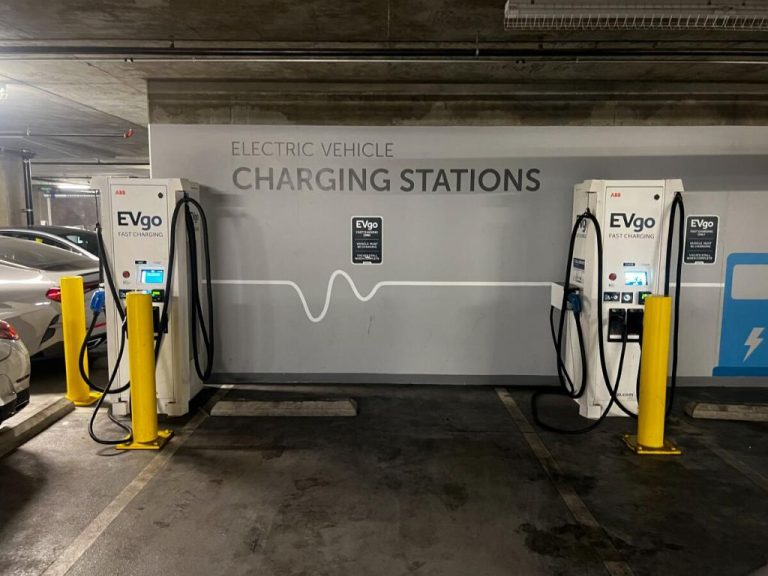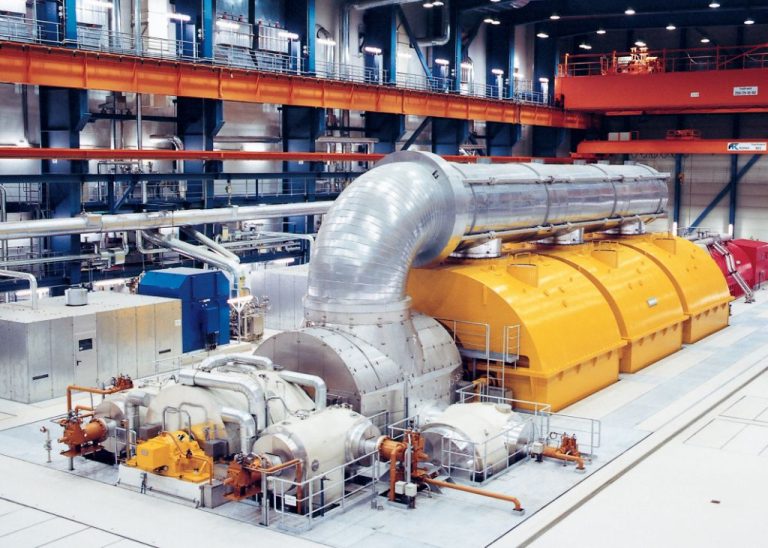What Is The Definition Of Energy In Environmental Management?
Energy is a critical resource that drives all aspects of society and the environment. As the global population increases and standards of living improve around the world, energy demand continues to rise. At the same time, traditional energy production from fossil fuels emits greenhouse gases and other pollutants that contribute to climate change, air pollution, and other environmental damage. There is an urgent need to transition to cleaner, renewable sources of energy while also improving efficiency and reducing waste. Energy management has thus become a central focus in the pursuit of environmental sustainability.
Through thoughtful energy policies, conservation practices, and new technologies, humanity can limit its environmental footprint while still powering economic growth and human development. But this requires a nuanced understanding of energy itself- what it is, where it comes from, how we use it, and how to manage it wisely. This article provides an in-depth look at the role of energy in environmental management, from foundational concepts to emerging solutions.
Definition of Energy
In physics, energy is defined as the ability or capacity to do work. Work, in turn, is defined as the application of a force over a distance, so energy fundamentally refers to the capacity to move or change matter. Energy comes in many forms, such as kinetic, potential, thermal, chemical, nuclear, electrical, and others. While the total energy in a closed system always remains constant, energy can transform from one type to another. For example, stored chemical energy in a battery can convert into electricity to power devices.
The standard unit of energy is the joule, defined as the work done by a force of one newton acting over a distance of one meter. Different forms of energy are often expressed and quantified using different units. For instance, chemical energy is often measured in kilojoules or calories, while electrical energy is quantified in kilowatt-hours.
Energy is a fundamental property of both matter and radiation. Even when stationary, all matter contains internal energy related to the kinetic energy of vibrating atoms and molecules. In addition, mass and energy are equivalent according to Einstein’s equation E=mc^2. This means mass can be converted into energy and vice versa.
Forms of Energy
Energy exists in two fundamental forms – potential energy and kinetic energy. Potential energy is stored energy based on an object’s position or arrangement. For example, a ball held at a height above the ground has potential energy due to gravity. Kinetic energy is energy associated with motion. A ball rolling across the ground has kinetic energy. Energy can transform between potential and kinetic, but the total energy remains constant based on the laws of conservation of energy.
Other important forms of energy include:
- Chemical energy stored in the bonds between atoms and molecules. Food and fossil fuels contain chemical energy.
- Electrical energy from the movement of electrons. Solar panels and batteries work by converting sunlight and chemical energy into electricity.
- Nuclear energy stored within atomic nuclei and released in nuclear reactions. Nuclear power plants convert nuclear energy to electrical energy.
- Thermal energy from the random motions of particles. Heat is a form of thermal energy.
- Radiant energy like sunlight that travels in electromagnetic waves. Solar cells convert radiant light to electricity.
Understanding the different forms energy takes is crucial for studying environmental systems and developing sustainable energy solutions.
Energy in Environmental Systems
Energy flows through the environment in interconnected systems and cycles. Two key examples of how energy moves through ecosystems are food chains and biogeochemical cycles.
Food chains show the flow of energy between organisms as one consumes another. Energy enters the food chain when plants convert sunlight into chemical energy through photosynthesis. Herbivores get energy by eating plants, carnivores get energy by eating herbivores, and so on up the food chain. At each step, some energy is lost as heat, requiring a continual input of solar energy.
Biogeochemical cycles circulate chemical elements through the biosphere. Key cycles include water, carbon, nitrogen, phosphorus, and sulfur. The sun provides energy that powers the movement of elements through ecosystems. For example, in the water cycle solar energy evaporates water, which eventually condenses and falls as rain, enabling plant growth and completing the cycle.
Understanding how energy flows in systems is crucial for environmental management. Disruptions to energy flows, such as habitat loss or pollution, can impact ecosystem health and services humans depend on.
Laws of Thermodynamics
The laws of thermodynamics describe the relationship between heat, work, and energy in natural processes. There are three primary laws of thermodynamics that are relevant to energy and environmental management:
The First Law of Thermodynamics, also known as the law of conservation of energy, states that energy can neither be created nor destroyed, it can only be transformed from one form to another. This means the total energy in a closed system always remains constant. For example, when a log burns, chemical energy is transformed into heat and light energy. The total amount of energy remains the same through this process.
The Second Law of Thermodynamics describes the natural direction of heat transfer and the concept of entropy. Heat will naturally flow from warmer objects to cooler objects, not the reverse. Entropy is a measure of disorder in a system – the higher the entropy, the more disordered a system. Entropy always increases in natural processes, meaning disorder tends to increase in the universe over time.
The Third Law of Thermodynamics states that a system’s entropy approaches a constant minimum as its temperature approaches absolute zero. This means that a perfectly ordered crystal structure represents the minimum amount of entropy in a system.
These thermodynamic laws place fundamental constraints on energy use and transformation processes relevant to environmental management. The first and second laws in particular demonstrate that energy tends to dissipate over time into less ordered and usable forms.
Energy Resources
Energy resources can be divided into two main categories – renewable and nonrenewable. Renewable energy comes from natural sources that are continuously replenished, such as sunlight, wind, rain, tides, waves, and geothermal heat. Nonrenewable energy is derived from finite resources that will eventually dwindle, the most notable being fossil fuels like coal, oil and natural gas.
Renewable energy resources are considered more sustainable because they are naturally replenished and available indefinitely. They produce much less pollution and carbon emissions compared to nonrenewable sources. Types of renewable energy include solar, wind, hydroelectric, geothermal, and biomass. However, renewable sources (excluding hydroelectric) currently make up a relatively small share of global energy use. There are still limitations around intermittency, storage and transmission that need to be addressed.
Nonrenewable fossil fuels currently dominate the global energy mix, providing around 80% of the world’s energy. While extremely useful due to their high energy density and versatility, nonrenewables are being rapidly depleted and lead to issues like climate change and air pollution when burned. Extraction methods also carry environmental risks. Continued high usage of nonrenewable sources is unsustainable in the long run.
In summary, shifting energy usage towards renewable sources and away from nonrenewable fuels is crucial for building a sustainable energy system and protecting the environment. But this transition will take time. A mix of both renewable and nonrenewable energy will be needed to meet short-term energy demand while making progress towards long-term renewable energy goals.
Energy Consumption
Energy consumption refers to the use and expenditure of energy resources such as electricity, natural gas, oil, coal, and renewable sources. Global energy consumption has increased dramatically over the past century, driven by population growth, economic development, and technological advances.
According to the U.S. Energy Information Administration, total world energy consumption was about 575 quadrillion British Thermal Units (BTUs) in 2020. This represents a nearly 300% increase since 1965. The largest share of energy consumption comes from fossil fuels like petroleum, natural gas, and coal. However, the share of renewable energy sources like solar, wind, hydropower, and biofuels has been rising.
The growth in energy consumption has enabled economic development and improved standards of living globally. But it has also led to environmental problems like air and water pollution, habitat destruction, and greenhouse gas emissions contributing to climate change. High per capita energy use in developed countries like the United States is also not sustainable or equitable compared to lower consumption in developing nations.
Going forward, improving energy efficiency, transitioning to renewable sources, and promoting conservation will be critical to meet energy needs sustainably while minimizing environmental impacts. Strategies like smart grids, green building design, mass transit, and circular economic systems can help decouple energy use from economic growth and development.
Energy Management
Energy management refers to the systematic practices and processes to optimize energy use and reduce energy waste. Effective energy management is crucial for organizations and individuals to lower energy costs, increase efficiency, and minimize environmental impacts.
Some key strategies and best practices for energy management include:
- Conducting energy audits to identify areas of energy waste and opportunities for efficiency improvements
- Implementing energy conservation measures like installing energy efficient lighting, properly insulating facilities, and upgrading to ENERGY STAR certified appliances
- Adopting energy management information systems to track real-time energy use data and identify anomalies
- Optimizing heating, ventilation and air conditioning (HVAC) systems through scheduled maintenance, upgrading controls and settings
- Improving operations and maintenance procedures to sustain energy efficiencies
- Instituting energy awareness programs to educate and motivate staff on energy saving behaviors
- Exploring renewable energy sources such as solar, wind, geothermal to reduce fossil fuel dependence
- Participating in demand response programs to shift energy use during peak demand periods
- Pursuing energy certifications like ISO 50001 or ENERGY STAR to demonstrate commitment
Effective energy management requires a systematic, organization-wide approach with involvement from all staff levels. By implementing best practices, organizations can significantly cut energy costs while reducing their environmental footprint.
Environmental Impacts
The use of energy has significant environmental effects. The burning of fossil fuels like coal, oil and natural gas releases greenhouse gases like carbon dioxide into the atmosphere. This causes climate change as these greenhouse gases trap heat. Fossil fuel use also leads to air pollution in the form of smog, acid rain and particulate matter, which damages human health. Extracting and transporting fossil fuels can lead to oil spills that pollute land and water. Nuclear power creates radioactive waste that must be properly disposed of. Hydroelectric dams flood habitats upstream and disrupt river ecosystems.
Renewable energy sources like solar, wind and geothermal have much lower environmental impacts than fossil fuels. But they still have effects, like wind turbines killing birds or disrupting habitats. Large solar farms use a significant amount of land. Overall, the use of renewable energy and increased energy efficiency are needed to reduce the environmental damage from our energy system.
Sustainable energy management requires transitioning to clean energy sources, conserving energy, increasing efficiency and minimizing environmental damage. How we produce and consume energy has huge ecological consequences across the planet.
Conclusion
In summary, energy is the ability to do work and exists in various forms such as kinetic, potential, thermal, chemical, nuclear and more. Within environmental systems, energy flows and transforms between these different states according to the laws of thermodynamics. Sustainable management of energy resources and consumption is crucial to minimize environmental impacts and ensure adequate supply for present and future generations. This involves transitioning to renewable sources, improving efficiency across sectors, and adopting responsible practices on an individual and systemic level. With a comprehensive understanding of energy and its role in environmental management, we can work collectively toward a more sustainable future.






